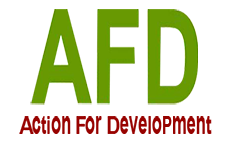Building Climate Resilient Communities in Stung Prey Pros Watershed
Project Information
The Stung Prey Pros watershed is one of the most vulnerable to climate change in Cambodia. In recent years, the hydrology has been negatively impacted due to land conversion and sand mining, reversing gains made to the local economy and food security. Projected climate risks, including decreased rainfall and increased heat, will add pressure on this already fragile ecosystem. To address these, the Building Climate Resilient Communities project will reduce climate vulnerability, improve natural resource management, increase local food security and economic resilience for 1,500 smallholder and indigenous households using Ecosystem Based Adaptation (EbA) approaches at the district level. Through integrated landscape management and building local adaptative capacity, the project will mainstream EbA approaches into the local planning processes and improve the local reporting process on climate action. The project anticipates building understanding and mobilizing of existing knowledge with local planners to ensure that EbA is a key component for a short and long-term local development plan and sustainable development. To achieve this, multi-stakeholder participation in EbA will be strengthened using innovative tools and integration approaches to manage resources to enhance sustainable use of natural resources and ecosystems.
Project Status
The “Building Climate Resilient Communities in Stung Prey Pros Watershed” project began in November 2023. CWS’ project team has consulted with the local community within the watershed and relevant local government officials to present the approach of the project. This consultation process has not only fostered a sense of ownership and collaboration among the stakeholders but has also ensured that the project aligns with the priorities and needs of the communities. Moreover, by involving local government officials, the project team has gained valuable insights into existing policies and regulations that can support or hinder the implementation of climate resilience measures in the watershed.


